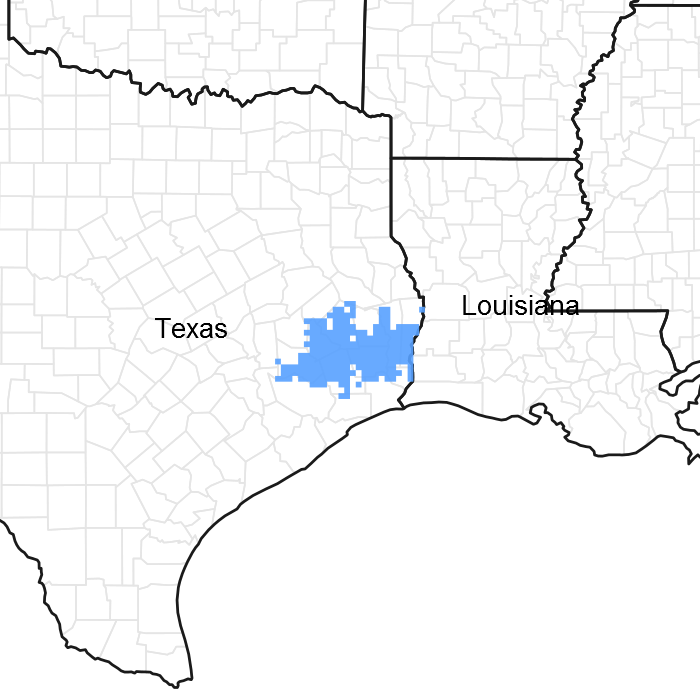
Natural Resources
Conservation Service
Ecological site F152BY001TX
Depressional
Last updated: 9/22/2023
Accessed: 12/22/2025
General information
Provisional. A provisional ecological site description has undergone quality control and quality assurance review. It contains a working state and transition model and enough information to identify the ecological site.

Figure 1. Mapped extent
Areas shown in blue indicate the maximum mapped extent of this ecological site. Other ecological sites likely occur within the highlighted areas. It is also possible for this ecological site to occur outside of highlighted areas if detailed soil survey has not been completed or recently updated.
MLRA notes
Major Land Resource Area (MLRA): 152B–Western Gulf Coast Flatwoods
Major Land Resource Area (MLRA) 152B, Western Gulf Coast Flatwoods, is in eastern Texas and western Louisiana. Locally termed the Flatwoods, the area is dominated by coniferous forest covering 5,681 square miles (14,714 square kilometers). The region is a hugely diverse transition zone between the northern and eastern mixed forests and southern and western coastal prairies and grasslands.
Classification relationships
Major Land Resource Area (MLRA) (USDA-Natural Resources Conservation Service, 2006)
Ecological site concept
The Depressional ecological site has very deep, very poorly or poorly drained soils that are ponded to 0.5 feet from November to May. The depressions occur as isolated system on uplands and terraces. Their isolation and inundation of water form their hydrophytic plant communities.
Associated sites
| F152BY010TX |
Terrace Soils have better drainage and on terrace position. |
|---|---|
| F152BY005TX |
Seasonally Wet Loamy Upland Soils are on a slightly higher landform. |
| F152BY006TX |
Well Drained Loamy Upland Soils are well drained and on higher landform. |
| F152BY007TX |
Poorly Drained Loamy Upland Soils have better drainage and on slightly higher landform. |
Similar sites
| F152BY011TX |
Swamp Soils are ponded almost year-round and on a lower landform. |
|---|---|
| F152BY007TX |
Poorly Drained Loamy Upland Soils have better drainage and on slightly higher landform. |
Table 1. Dominant plant species
| Tree |
(1) Nyssa sylvatica |
|---|---|
| Shrub |
(1) Smilax laurifolia |
| Herbaceous |
(1) Carex cherokeensis |
Click on box and path labels to scroll to the respective text.
Ecosystem states
| T1A | - | Introduction of Chinese tallow and/or other non-native |
|---|---|---|
| T1B | - | Native vegetation has been cleared and replaced with desirable timber species. |
| R2 | - | Mechanical and chemical control of Chinese tallow |
| T2A | - | Existing vegetation cleared and replaced with desirable timber species. |
| R3 | - | Selective harvest combined with reintroduction of native species. |